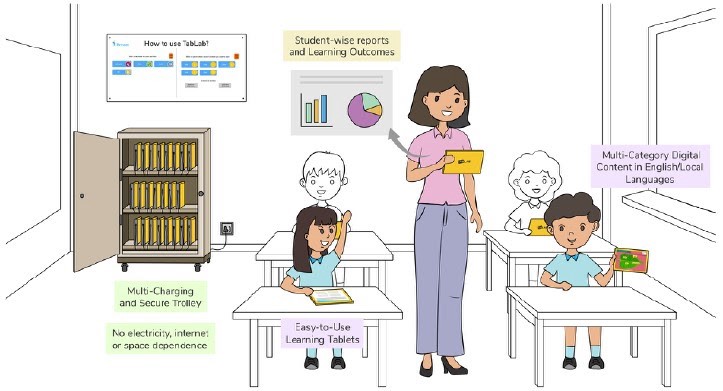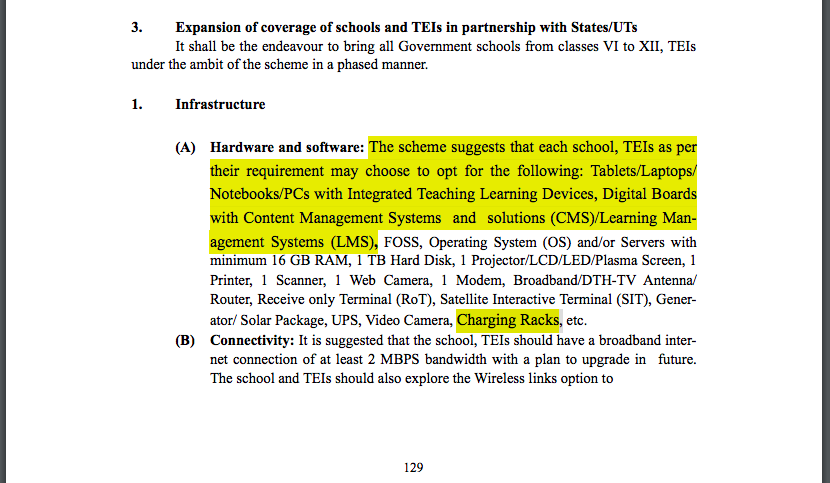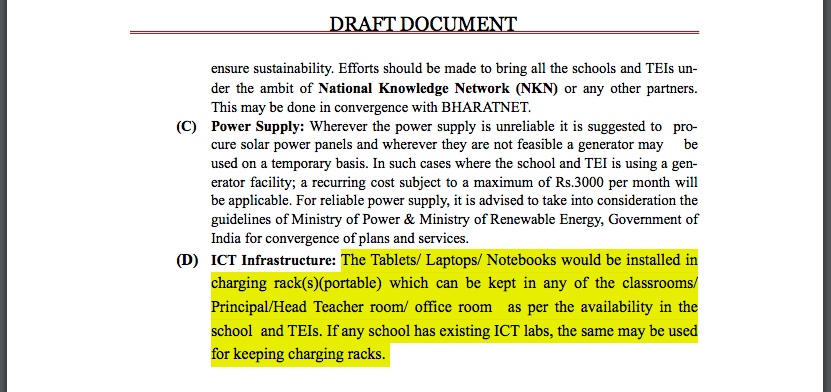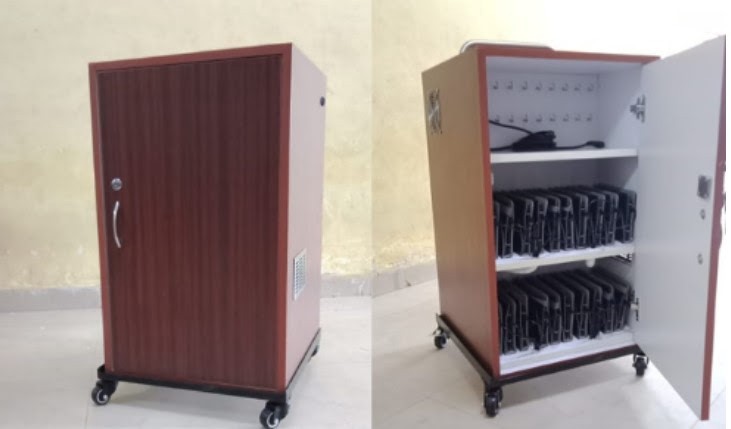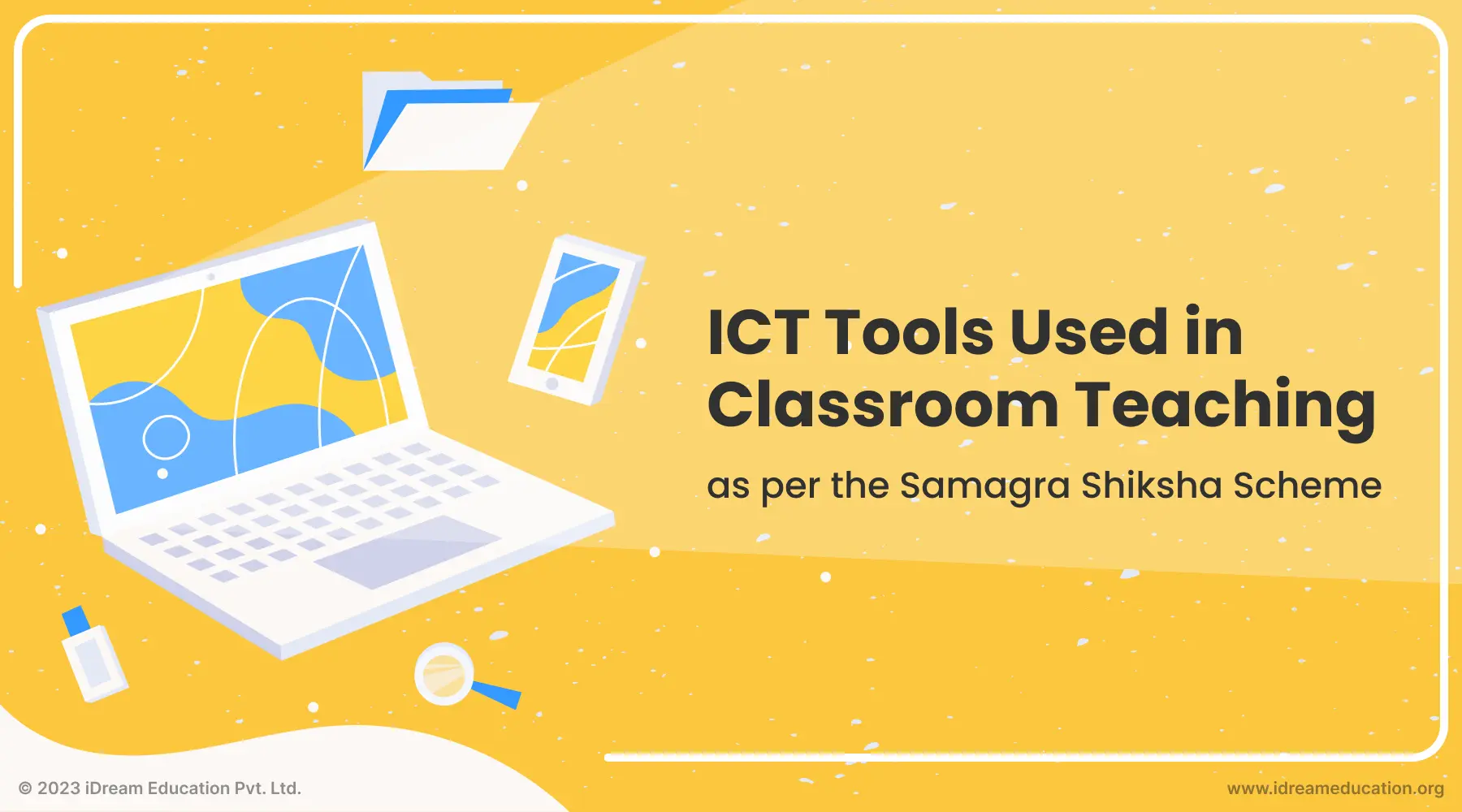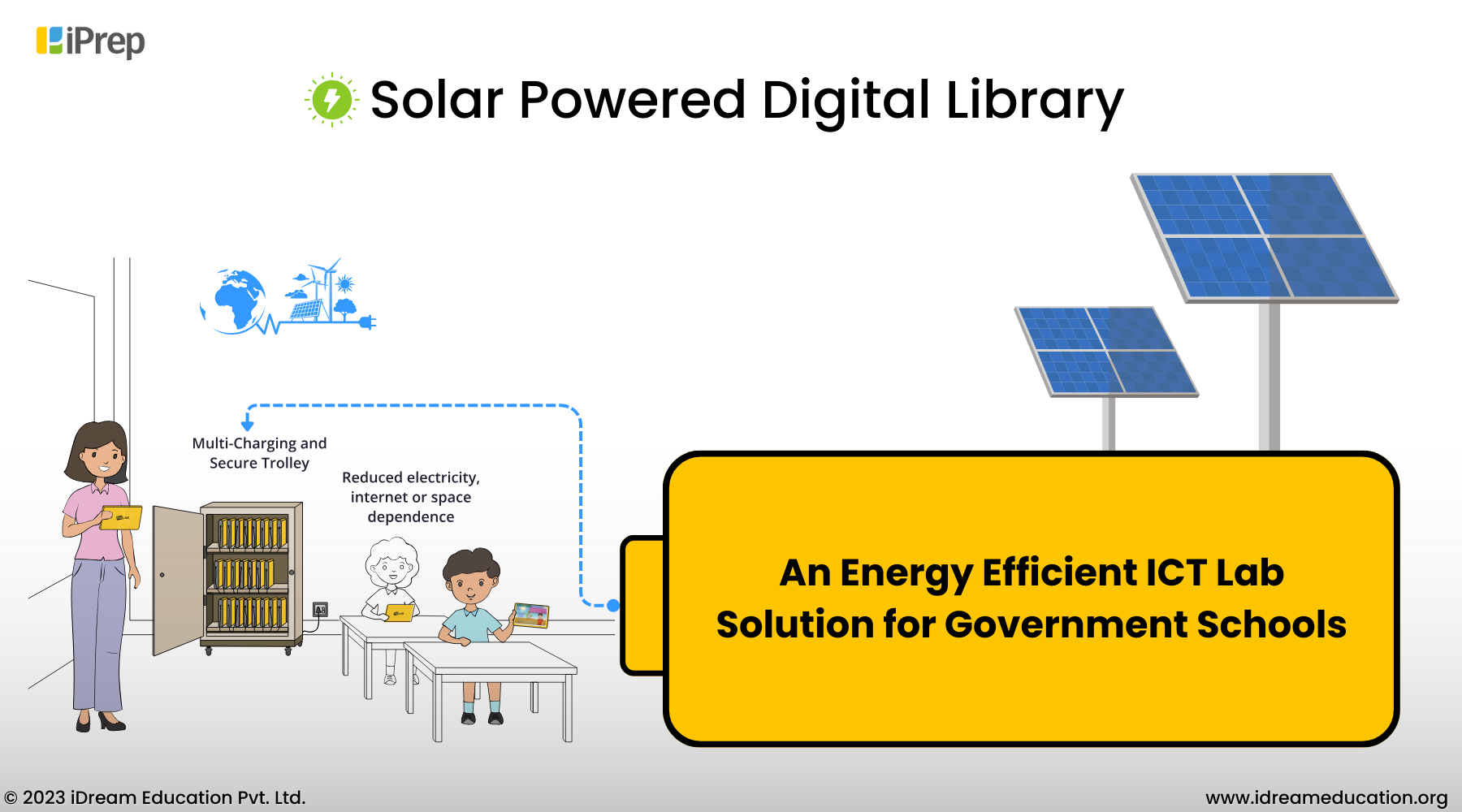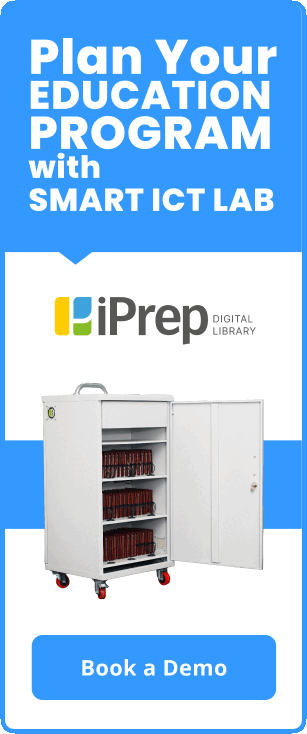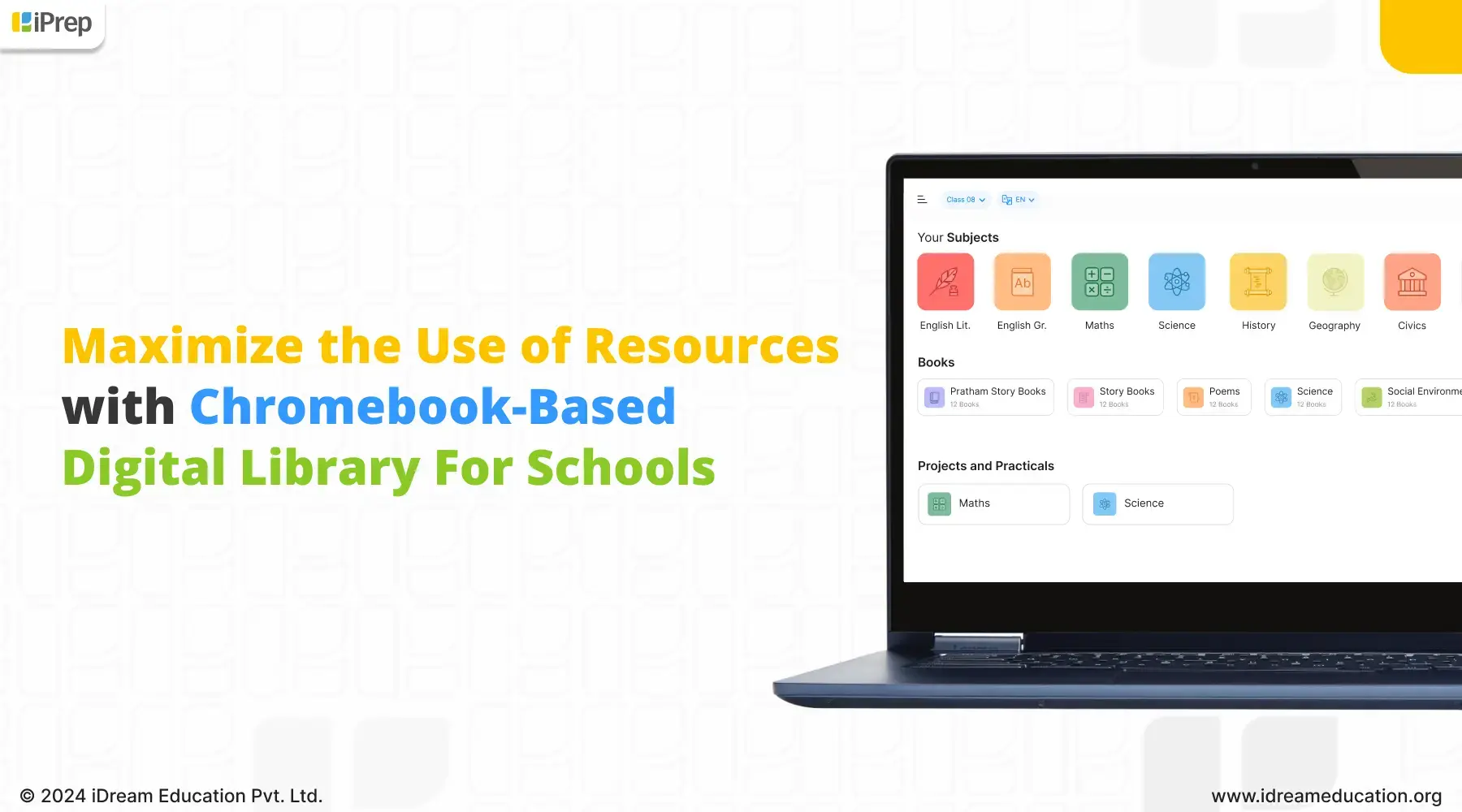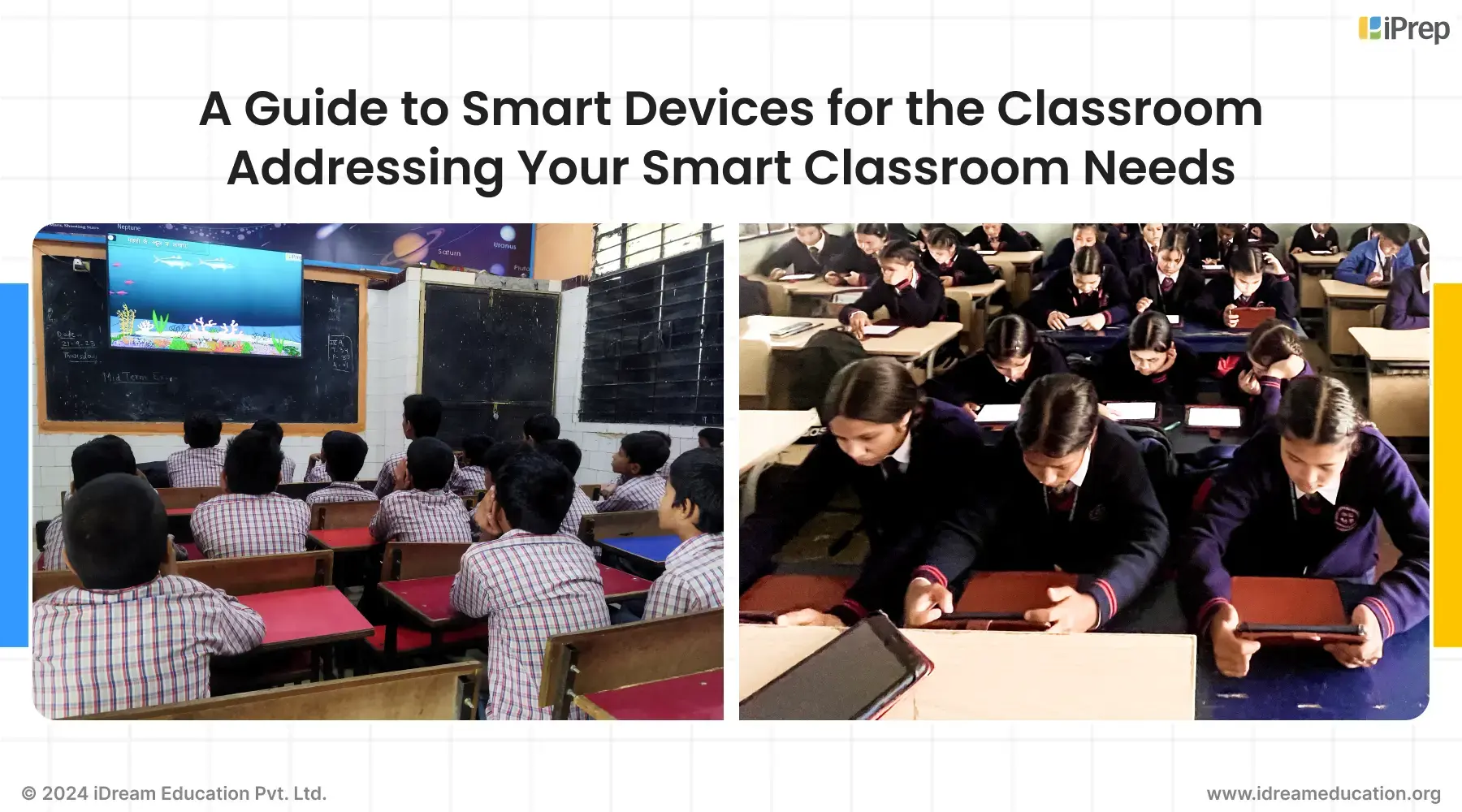iPrep Digital Libraries- ICT Labs For Schools
ICT stands for Information and Communication Technology. The implementation of ICT labs in schools was launched in 2004 and was revised in 2010 to provide secondary-stage students an opportunity to understand in a better way from a computer-aided learning process. ICT labs in government schools are a component of Rashtriya Madhyamik Shiksha Abhiyan (RMSA).
In 2018, the Ministry of Human Resource Development (MHRD) did a major revamp of all its school education programs. They started integrating them into the Samagra Shiksha Abhiyan. The purpose was to revamp, revise, and upgrade all aspects of government-funded initiatives. All that is to help the government schools for better implementation and outcomes.
MHRD reviewed the usage, setup, and historical learning outcomes from the ICT & RMSA scheme. They also reviewed all the other possible aspects of school education. Here computer labs were set up at thousands of government schools across states over the last decade. MHRD noted that govt schools weren’t using these computers due to complex hardware. They are also difficult to maintain and have electricity dependence while they also block a separate room. It also has some other infrastructural challenges which usually happen at government schools. So they added a preferred option of tablets/laptops/Chromebooks for ICT Lab as an attempt to solve some of these issues (more on this later).
The ICT lab scheme for schools has four components:
- Partnership with government and UT administration
- Establishment of Smart Schools
- Teacher encouragement programs
- Development of E-Content
Benefits under the ICT labs scheme for government and semi-government schools:
Financial Aid to schools for ICT lab setup:
This part covers the first two components of the ICT lab scheme.
- The schools affiliated with the Central Institute of Education Technologies (CIET), State Institutes of Education Technologies (SIETs), and Regional Institutes of Education (RIEs) got financial support. This was based on the approval given by the Project Approval Board (PAB).
- They got 6.4L of upfront ICT Lab setup expenditure. Plus they’ll be getting an annual recurring expenditure of 2.70L by the government for a period of 5 years.
- The Central government has advised the State Government and UTs to set up 150 smart schools at the district level. For that, every school will get a total sum of 25L. They will get an additional recurring amount of 2.5L per year to set up and maintain at least 40 computers in each school.
- The ratio of the project cost shared by the Central Government vs the State Government will be 75:25 percent with an exception to the northeastern states which will be 90:10 percent.
Benefits for teachers:
- Provision for a full-time teacher and ICT lab assistant. The qualification requirement and recruitment of the teacher and the assistant are largely dependent on the capacity of the school and the level of students for whom the ICT lab has been set up (e.g. for higher secondary students the minimum criteria for a computer teacher is a postgraduate degree).
- In-service capacity enhancement training to all teachers so that they can become a bridge between the ICT lab learning process/technology and students.
- A national-level ICT award to motivate hard-working teachers on Teachers Day every year.
Benefits for students:
- Management, monitoring, and evaluation of the progress of each student. In the desktop version of the ICT lab, this was not possible so the central government is now encouraging schools to adopt Tablet based ICT labs.
- Implementation of an ebasta portal for students to get easy access to digital content through audio-video medium.
- There is a provision to strengthen SIETs to contribute to e-content development.
- The government is also encouraging private players to participate in the development of smart e-content for ICT labs in government and private schools.
Challenges under the ICT lab Scheme
Although the government is releasing funds and schemes every year to improve the condition of education in India, there are still some challenges on the ground that need to be addressed.
ICT lab challenge 1: Lack of motivation due to complex hardware
When it comes to handling the ICT lab hardware, several barriers hinder the learning process. These include lack of electricity, unreliability of equipment, lack of technical support, and other resource-related issues such as not using up-to-date hardware and software. Most of the schools rarely use only one printer or scanner. Forget about the printers and scanners. Even the ICT labs are hardly ever used.
In a research done by Vikramjit Singh of St. Xavier’s College of Education, Patna with 1551 students from 87 schools of selected districts of Bihar in 2018, the findings were even more eye-opening.
When asked about how many times the students use ICT Lab in a week, 72.04% of students reported that they never use ICT labs.
This report also indicates that during the initial years, both students and teachers seem to be motivated but gradually they stop using ICT labs.
ICT lab challenge 2: Lack of skilled teachers in government schools
A majority of schools either do not have computer teachers or lack the right kind of knowledge required to operate the ICT lab. This lack of skills is also a reason why the teachers are not motivated (and motivating their students) to learn from the ICT labs.
From the previous report, it is clearly evident:
This screenshot also shows that the marks are not improving because they are not using the ICT labs properly. A large number of students don’t even have an email ID to begin with.
Steps taken by the government to overcome these challenges
As mentioned in the initial paragraphs of this article, the MHRD did a major revamp of all its school education programs by integrating them into the Samagra Shiksha Abhiyan in 2018. In the circular, there were some clear guidelines. It said that instead of setting up furniture and blocking a room, setting up desktop-based ICT labs, and making the process complex, the schools should use tablet-based ICT lab system that comes with lockable charging racks for tablets/ laptops. These racks are not dependent on a 24-hour electricity supply and the tablets are also easy to operate.
A lot of social EdTech organizations, NGOs, and CSR Foundations that are working with government schools and setting up computer labs or ICT labs saw this gap. It is about the non-usage after this big of an investment. Therefore they are proposing such shifts to use tablet-based ICT labs in schools. Also, people working in digital education for government schools can strongly relate to these challenges and it is their ongoing effort and suggestion.
Here is the link to the draft document of Samagra Shiksha Abhiyan which has gone to all the States and UTs in 2018/2019 as the revised policy document.
I will break down the major recommendations made by the government for setting up tablet-based ICT labs for schools here which has been outlined in Chapter 7 from page 127 onwards.
On page 129 of the framework document, the hardware guidelines are outlined for ICT implementation.
On the next page, it outlines the suggested approach to setup and usage of such hardware and charging racks in ICT Infrastructure.
Highlights of the key suggestions:
1. Easy-to-use and manageable Digital Hardware
The policy now suggests that instead of only computers, the state governments and Union Territories should consider Tablets/Laptops/Notebooks/PCs along with other supporting hardware for easy setup and usage.
2. Storage and Charging Racks
Typically where fixed hardware, wiring, and charging points were set for computers, it is suggested that government schools use lockable storage and charging racks, which have inbuilt charging points for all tablets/laptops to easily store, manage, and simultaneously charge all the hardware devices.
3. Integration to Solar Power Units
It is suggested that where electricity connection and regularity are an issue, the charging racks of tablets/laptops can be integrated with a rooftop solar unit. Since tablets/laptops can run for hours once charged, therefore a solar unit source can make them completely electricity-independent propelling regular charging and usage in all situations.
4. Movable or Corner fixed Racks for a Smart ICT Lab to avoid blocking new Rooms
Since space and infrastructure constraints are prominent in the majority of government schools, it is suggested that the charging racks of the tablets/laptops for the ICT lab be made movable with wheels and therefore can be kept in the principal room or the existing ICT room, else it can be fixed to a corner in any classroom where maximum usage can happen on rotational basis. This will greatly simplify space requirements and maintenance issues of the ICT Lab.
Our Research and solution for Tablet-based Smart ICT labs
When we found out about the circular by Samagra Siksha Abhiyan, it was no less than an appreciation for our work so we were excited. At iDream Education we have been setting up Digital Classrooms for government schools for many years with CSR and Foundations.
We have deeply studied the practical and psychological challenges faced by the teachers and school administration. We even studied the challenges of students in actual usage of the computer labs. Further, we have been advocating such fundamental shifts in the government guidelines and policies for digital hardware at government schools.
The Tablet based Smart ICT labs can solve the challenges faced by schools in the following ways:
Solving Challenge 1 with Tablet-based Smart ICT Lab:
Teachers have to go through a rigorous process before the PCs in the ICT labs start working. With students of lower and middle classes, it becomes even more complicated. And with an unreliable electric supply, these ICT labs add another layer of complexity.
So teachers prefer to take shortcuts and explain everything without PCs working. This leads to a lack of motivation in the students and teachers. Further, it leads to very less of actual ICT usage by students.
We reduced this complexity with Tablets as these are as handy as mobile phones. Everyone (even the kids) knows how to operate these. We also reduced the dependency on electricity by providing charging and storage racks.
This step taken by us increased the interest of both teachers and students in the class. The ICT lab usage in schools has increased drastically.
Solving Challenge 2 with Tablet-based Smart ICT Lab:
For a PC-based ICT lab, you need a person who is handy with desktops and/or laptops. That too, both in terms of software and hardware as these often face lags and operation issues.
With tablet-based ICT labs, the problem of the requirement for a computer teacher can be completely taken care of. That is because tablets are operated on the same pattern as any Android-based mobile phone. So having only the subject teacher is sufficient for the class to progress.
Here is a teacher telling about his experience with tablet-based ICT lab
Also, here is a live example of students using a tablet-based ICT lab completely hassle-free.
To summarize, we can say that the revised ICT Scheme brings depth and hope for a digitally powered future for our government school students. Now the states hold the key to how well the scheme is actualized. They hold the key to how progressively the changes are accepted and implemented for the desired outcomes. States and UTs should delve deeper into the practical aspects discussed above. They should then adopt Smart ICT Labs as the way forward.
We shall keep tracking the outcomes and keep sharing the same. All that with a focus on our mutual goal of digital learning empowerment for every rural child. And so, we are very hopeful.
Download Now – Learning App
Watch Now – Best learning videos for 1st to 12th class
Follow Our Social Media Channel
Facebook – https://www.facebook.com/idreameducation
Instagram – https://www.instagram.com/idreameducation/

